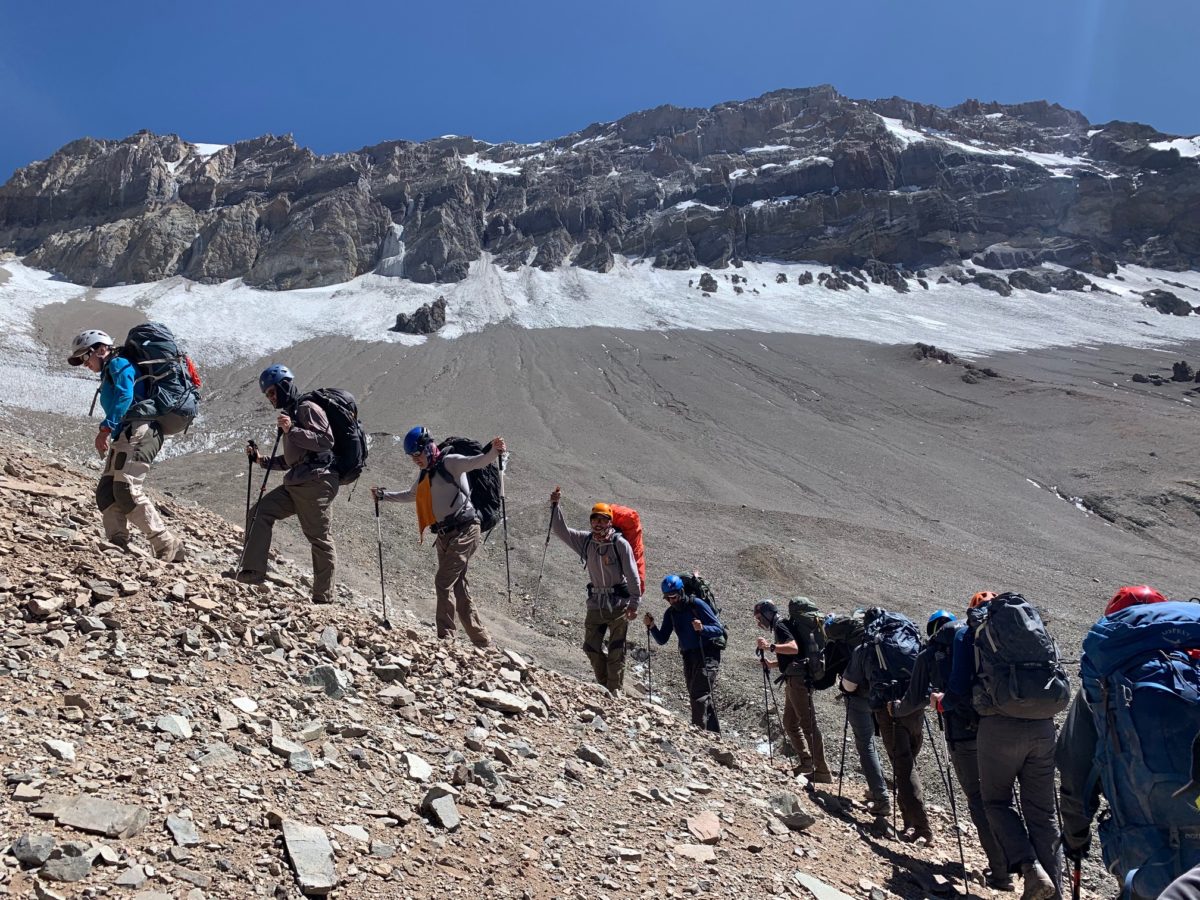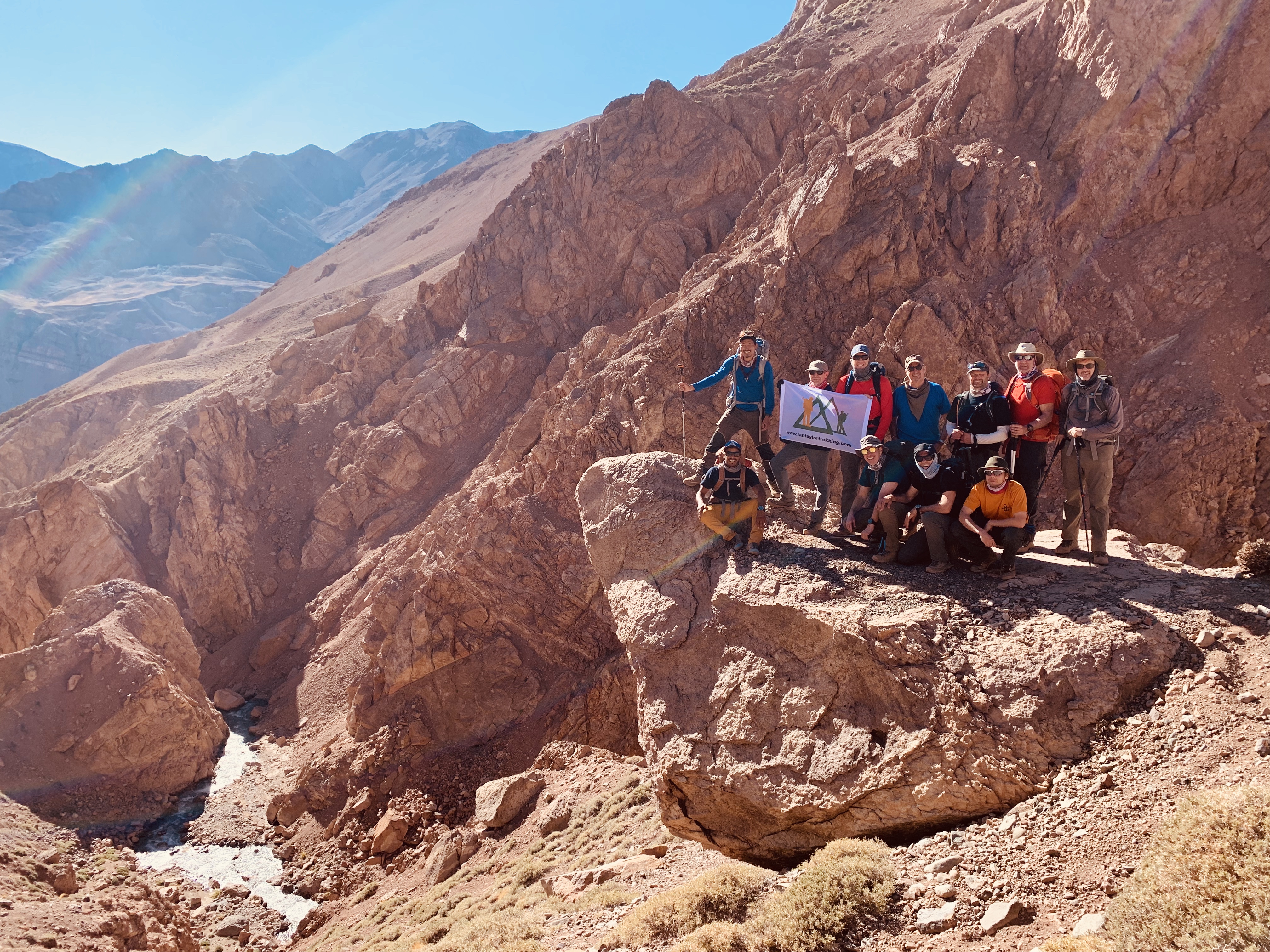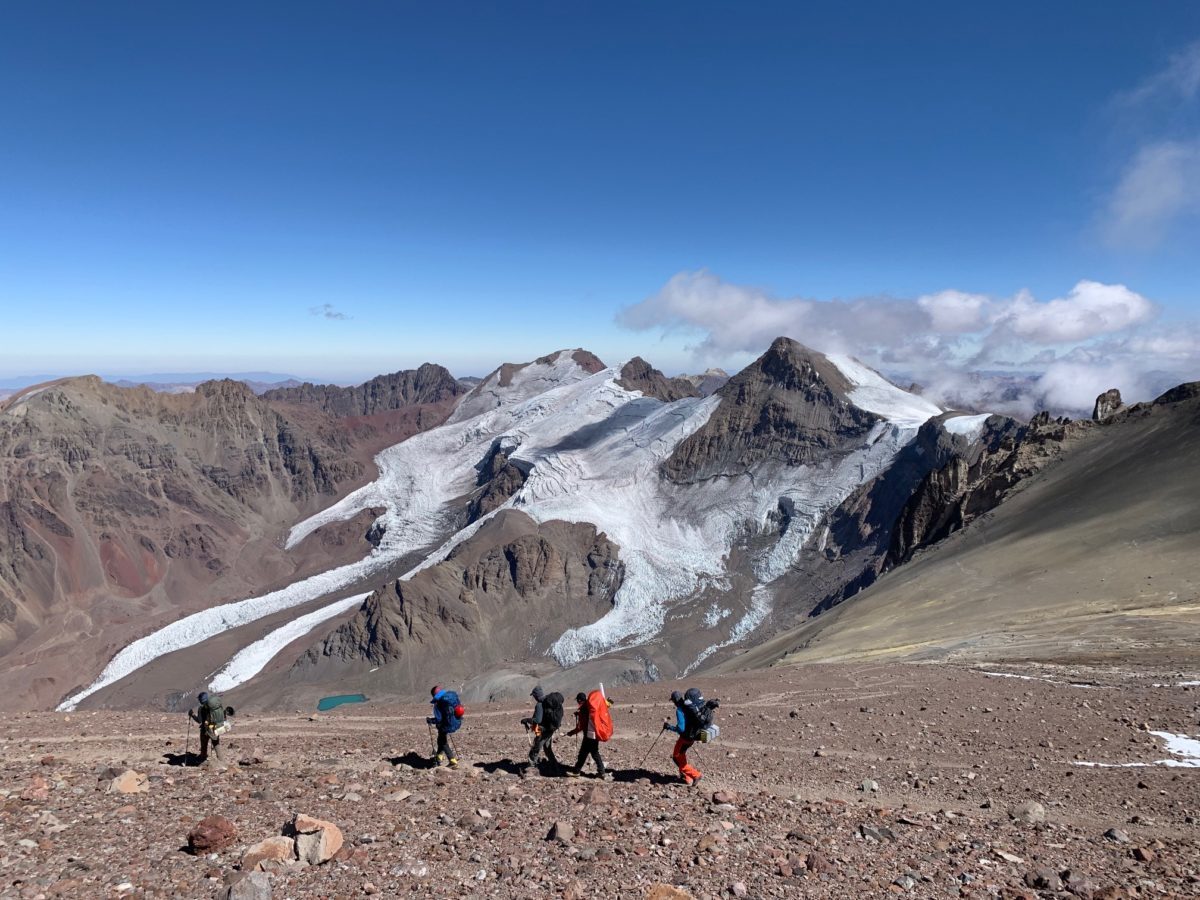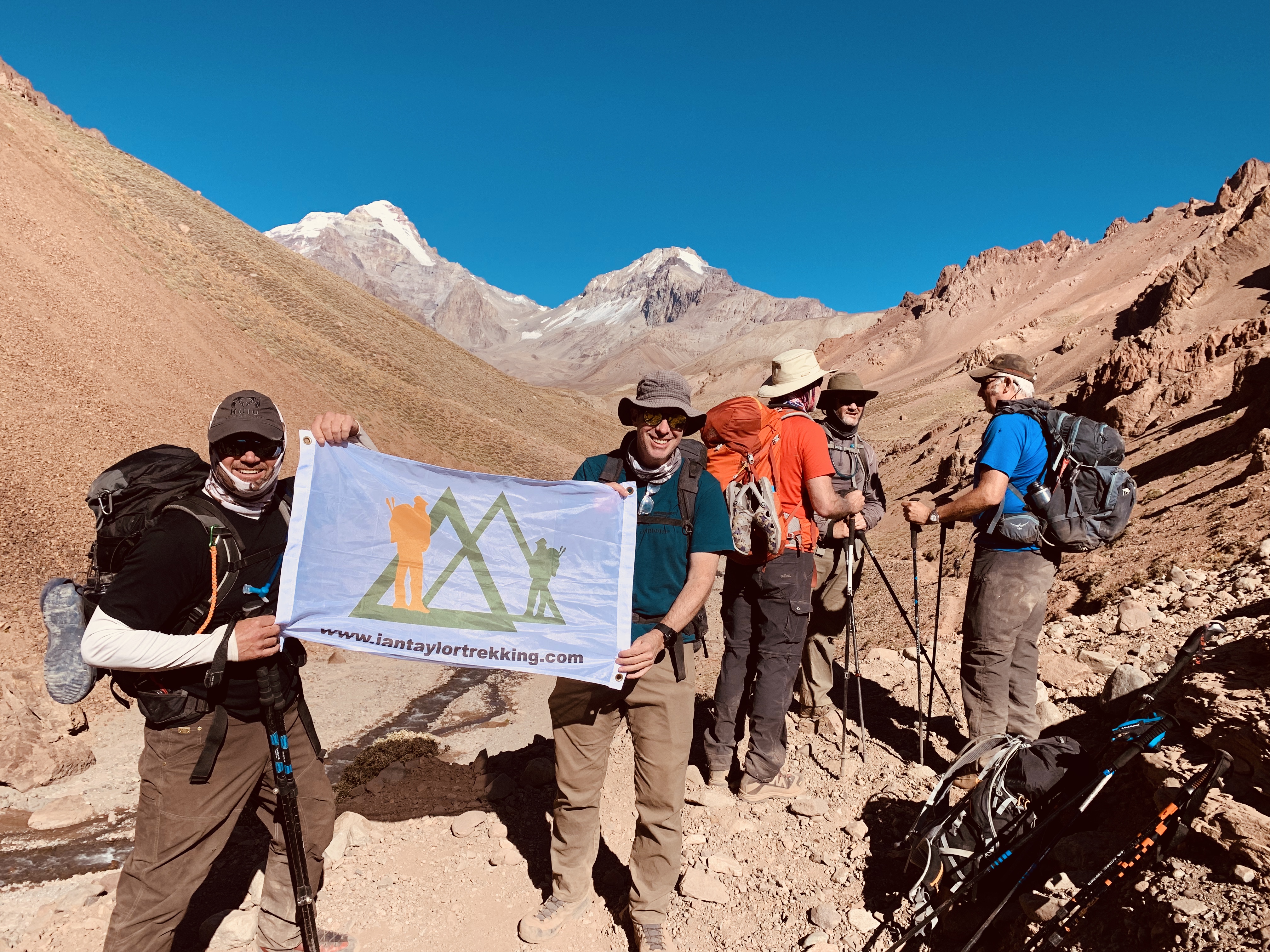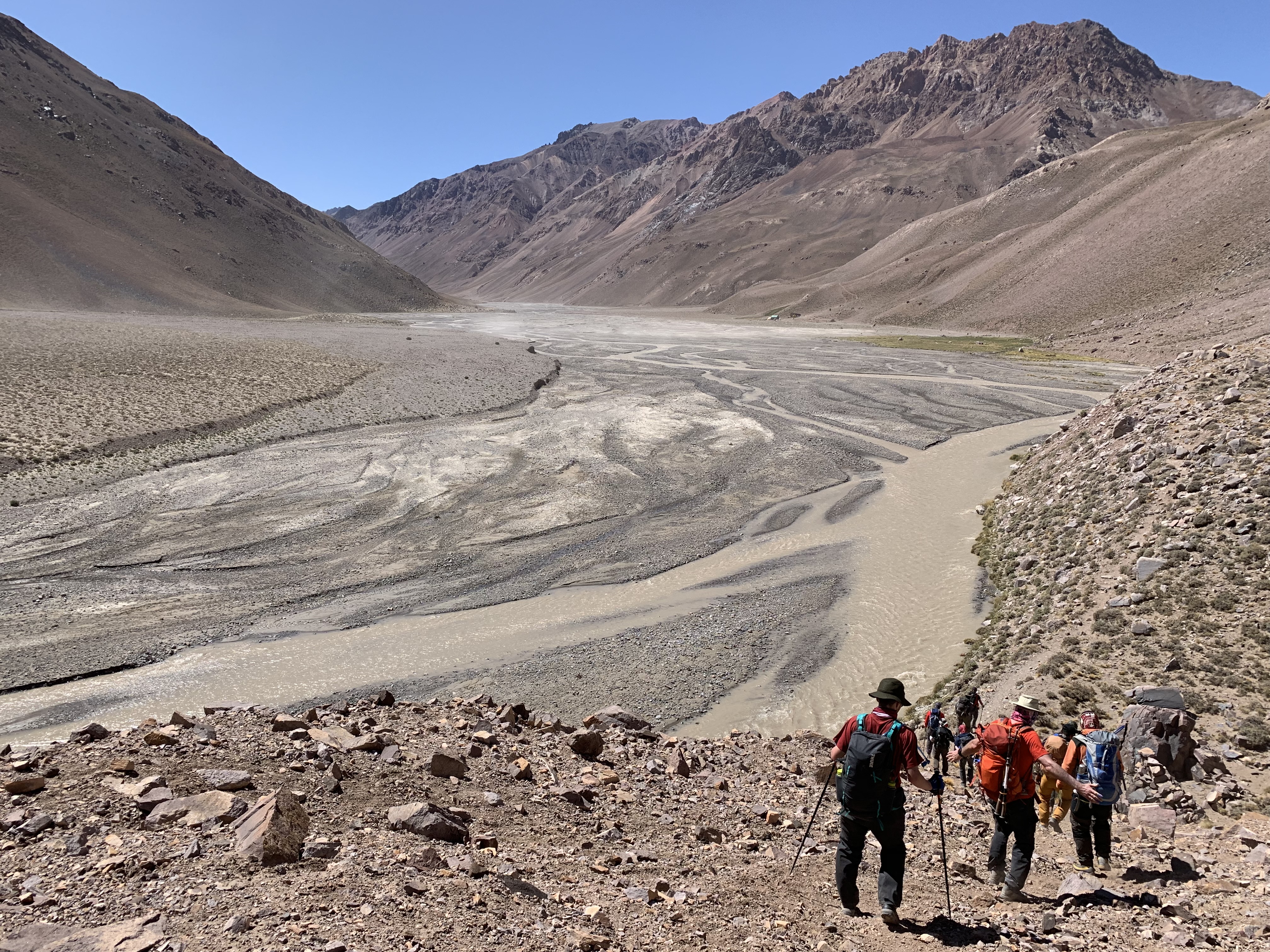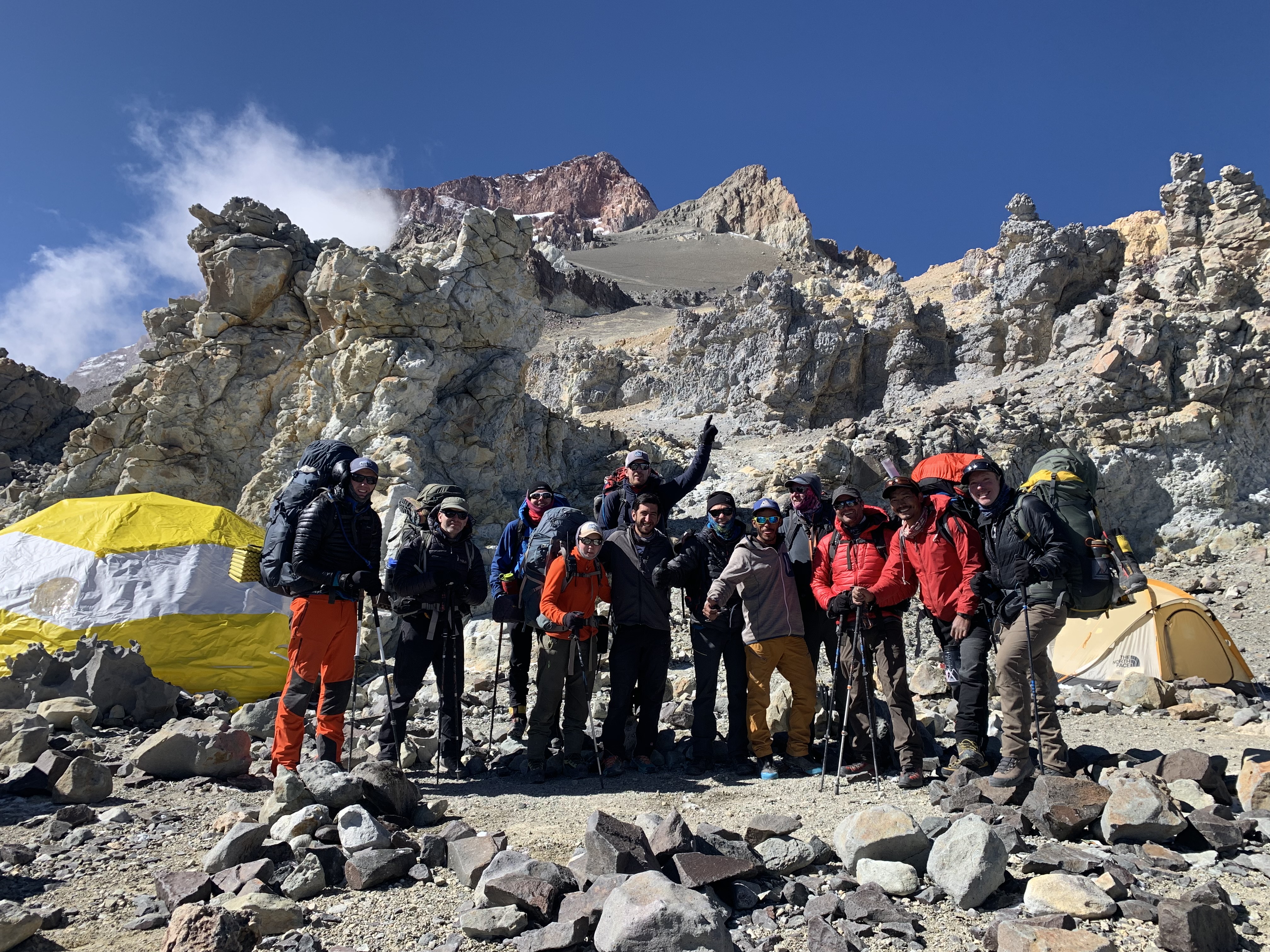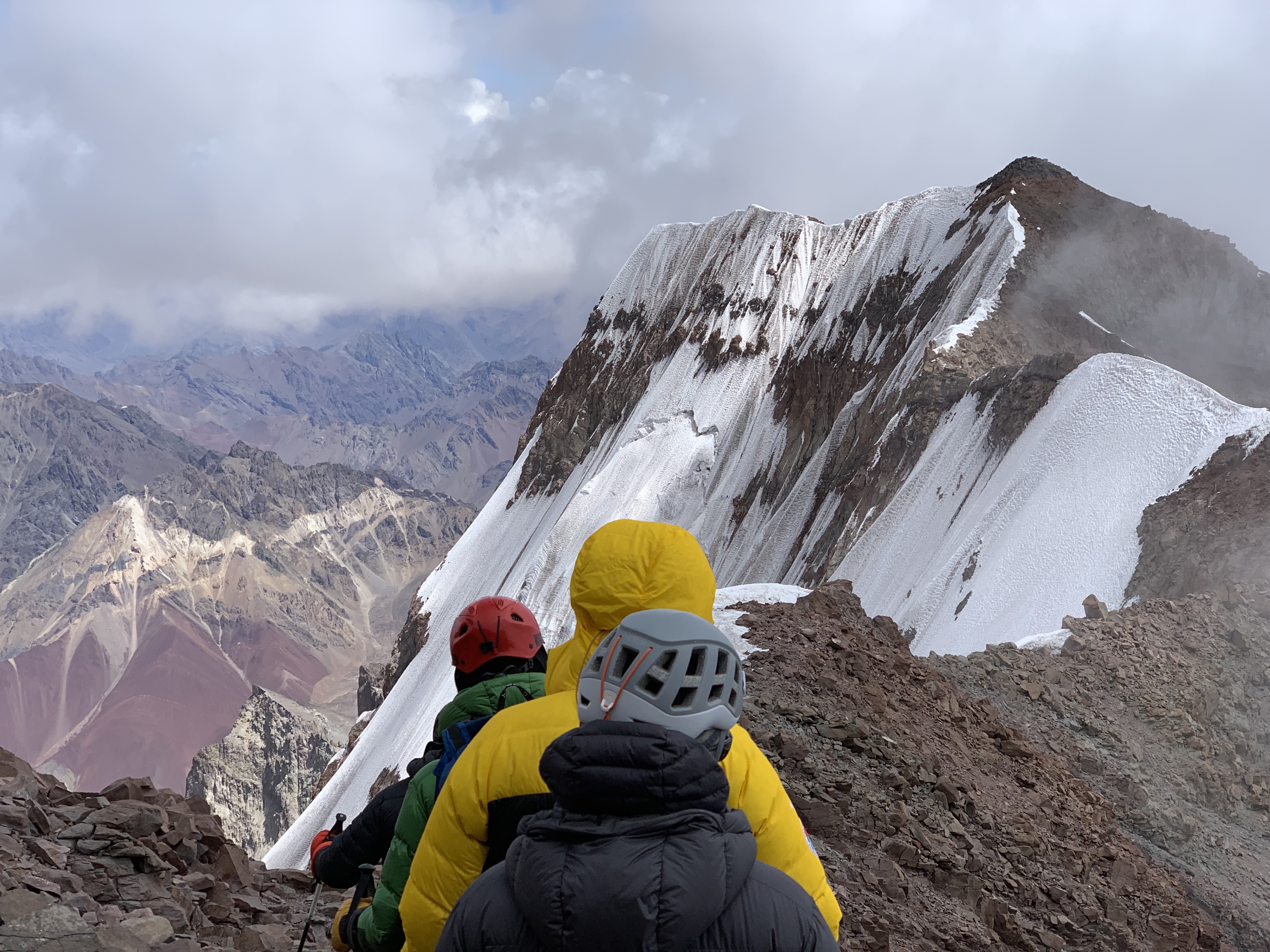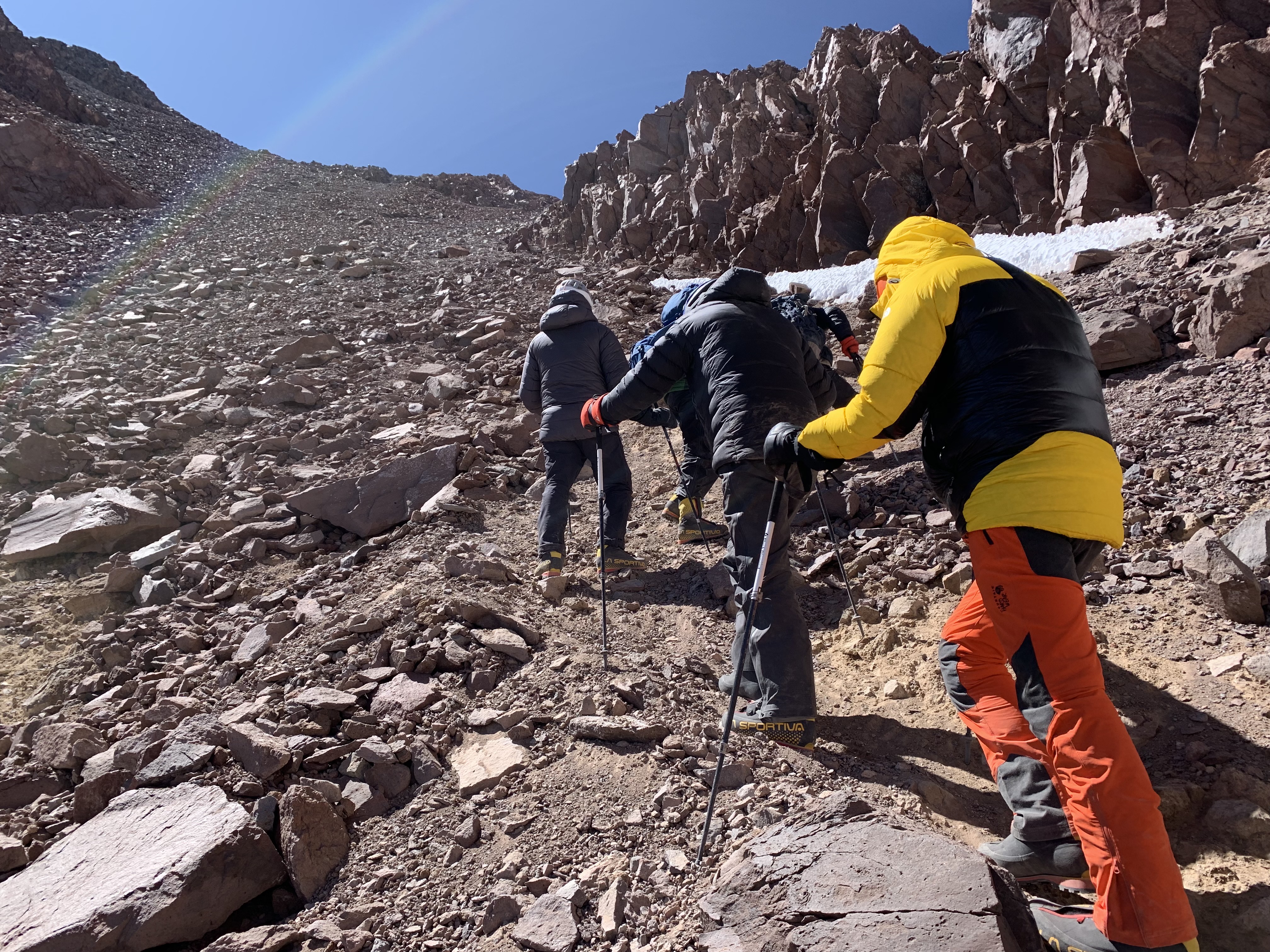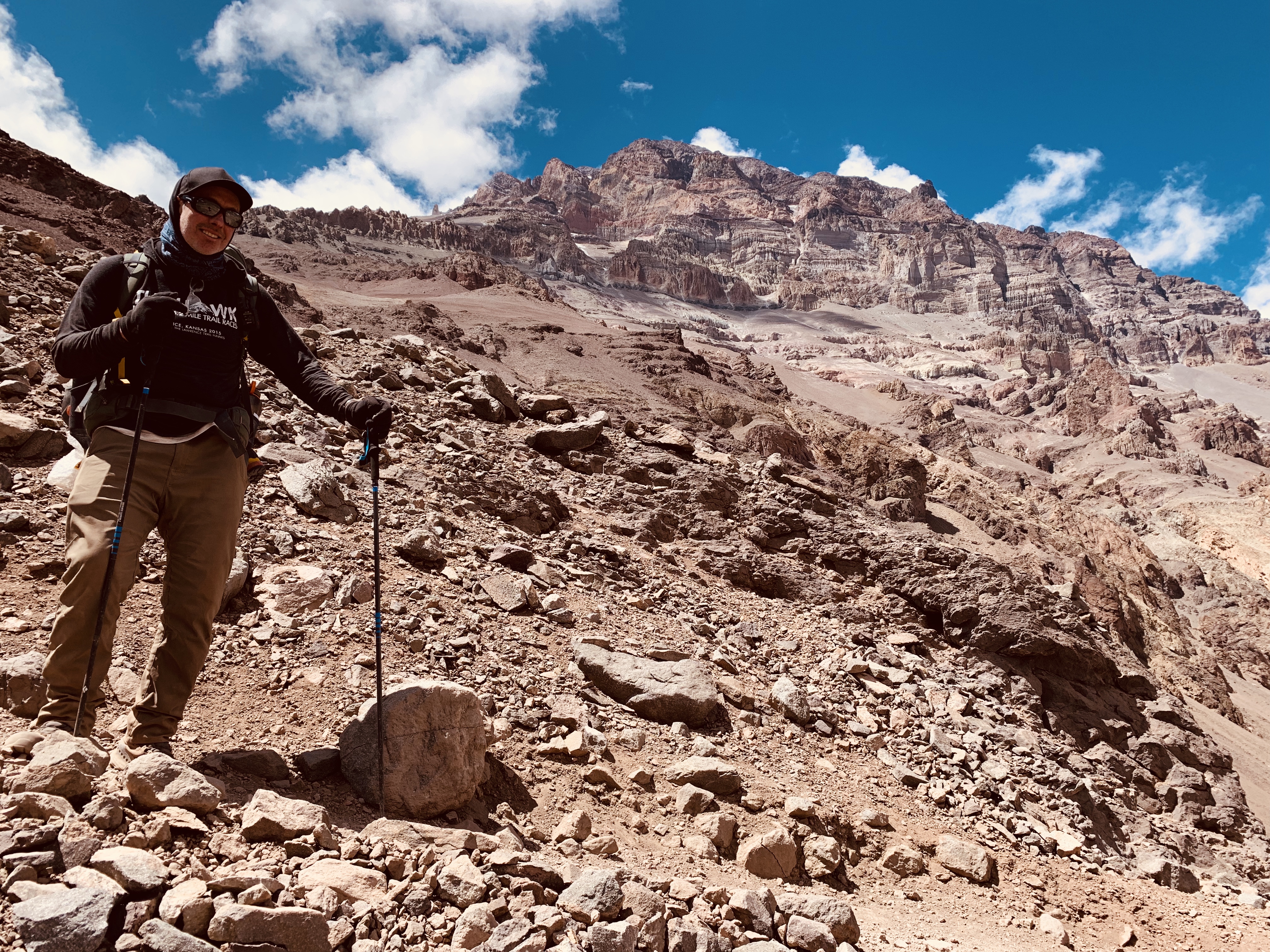Here is how you should be training to climb Aconcagua. First things first, DO NOT show up on one of our Aconcagua expeditions without being fully prepared. If you show up unprepared you put our set up, our staff, yourself, and team at risk. You need to have an excellent level of strength and specific mountain conditioning for this expedition. Check out all our upcoming trips.
Have Previous High Altitude Experience
Implement the right training before departing on an expedition and you absolutely give yourself the best chance of achieving the summit. I cannot emphasize enough that you need to be doing the correct strength and endurance training for steep mountain climbing with month of physical preparation.
You undertake the mountain training to be successful, but more importantly your safety depends on it. Read a blog written about one of our clients Aconcagua training.
You should have previous altitude experience having climbed some of the following peaks. Kilimanjaro, Mount Elbrus, Cotopaxi, Island peak or Mera Peak. You should be used to long distance trekking and used to carrying heavy backpacks. Also, building up to training 5/6 days a week is important. Our preferred route is the Vacas Valley Traverse Route.
Step by Step
There is never one size fits all when it comes to training so following an online plan would be a mistake.
Step 1: Get a Fitness Test
It is important to do a fitness test to understand your starting point and establish your specific Heart Rates training zones. The bulk of your training should be in zone 2 slow moving toward zone 3 training over time. Read more.
Step 2: Understand Heart Rate Training
It is important to build a very strong endurance base to have the correct physical condition for the specific trip you are doing. Read more.
Step 3: Understand the Specific Terrain
Every trip is different. Some trips are all stairs, others are trail, and steep terrain above Base Camp and Aconcagua has a challenging summit night. On top of that you have a lot of steep downhill trekking and you are carry heavy weight. Aconcagua has it all, steep terrain up and down, 30 degree incline and moving across uneven terrain.
You also need to understand the type of terrain you will be walking on. This is critical in evaluating the level of preparation you need to apply to your training program.
Step 4: Understand Elevation Gains & hours
Distances are not important on Aconcagua. What is important to understand is the elevation gains along with the amount about of hours you will exercising on a daily basis. Everything is judged in hours. Most days have 600m/ 2,000 feet of elevation gain or more so you need to comfortable doing these types of elevation gains on a daily basis in your training. Read more.
Step 5: Hill Training
Walking up and down hills of similar elevation gain on your chosen trip with weight in your backpack is a critical part of the training. Also consider add ankle weights to compensate for heavier boots and crampons that you will be wearing higher on the mountain. Longer hours spend on your feet moving up and down hills is an extremely important part of your training.
Step 6: Gym Training
It is important to supplement longer hikes with daily gym training sessions, building the correct strength and endurance. Read more.
Step 7: Train for the Downhill
Most people are not doing enough downhill training and building the correct stability, core and leg strength for moving down steep trail. Aconcagua is steep trekking on a multi-day basis. This means you need to comfortably move up and down steep terrain and your training needs to represent this. Being comfortable hiking up and down 1,000m/ 3,380 feet on steep hills.
Check out the elevation gains and descents on Aconcagua, so you can understand the specific training needed for this trip. I encourage you to review the daily elevation descents so you can train or the downhill.
Training to Climb Aconcagua Focus on Endurance and Strength
There are many ways to train the body, but when it comes to steep movement on the side of a mountain, it should be obvious. I will spell it out, focus on hill work, stairs steps, steep inclines with a weighted backpack. Learn more about training for low oxygen environments.
This training needs to be controlled and managed in targeted heart rate zones as you increase intensity.
It is important to choose the correct training method for the activity you are undertaking. Mountaineering or trekking expeditions like Aconcagua require you to have an excellent level of endurance and strength.
We chose to run all our Aconcagua Expeditions on the Vacas valley traverse route. Like all our trips we want more acclimatization on the best routes available. The journey is far more rewarding than the destination and we are not offering fast ascents on less interesting routes.
Five Important Things
Here are five things you need to be thinking about as you start to map out your training plan for climbing Aconcagua.
1). Picking the Best Itinerary with More Acclimatization
2). What are the Daily Distances
3). What are the Elevation Gains High on the Mountain
4). How much Weight will I be Carrying on the different Load Carry’s
5). How do I Train for the Lack of Oxygen
We can share all this information with you and help you understand how to develop a training plan with these element in mind. The only way to prepare for the lack of oxygen is by having more acclimatization days and training your body to carry more weight than you will carry on the mountain.
Check out our Top Tips
Training for endurance means working the Aerobic energy system in your body. Essentially your objective is to develop the energy production systems to meet the demands of the activity for as long as required. In mountaineering or trekking this can mean hours or days! Check out our TOP TIPS.
Training to Climb Aconcagua Build up Over Time
By having a good training routine training 4 to 6 days a week months and months before a trip you will hope to modify and postpone the point at which you become fatigued.
To train aerobic fitness and build endurance, you need to look to undertake activities that are lower in intensity but continue over a longer period. A short burst, for example 20 minutes on a running machine, is not going to prepare your body for 6 hours of walking up a steep incline with a weighted backpack.
Hiking with a Weighted Backpack
I understand this can be challenging for most people with work and family commitments to do such a regime. As a result, it is also important to look to other types of exercise as well. Try to do the following types of exercise for as long as you can at a reduced intensity.
1). Walking up hill especially on a stair master & 30-degree incline treadmill building up the weight you carry over time. Building up to 1 hour 30 minutes or 2 hours per day with 20kg/ 44lbs
2). Circuit training
3). Specific weight training
4). Swimming (provided you can swim for a sustained amount of time!)
5). Cycling, build up to 2+ hours with elevation gains.
6). Running
If you are struggling to find the time to do longer sessions on the weekend, you need to be training building from 1 hour 30 minutes per day in the gym. This should all be done in your endurance heart rate zone. You should aim to build towards 2 hours 30-minute sessions daily if possible, in the final few months before the trip.
Slowly Build up the Weight you Carry
After climbing Everest to the top, Kilimanjaro 40+ times and Aconcagua 10 times without a doubt, I am convinced that working out long and slow in your endurance and Anaerobic zone is one of the keys to safety and success.
We have helped thousands of people understand the specific training needed to be safe and successful. Building up to training 10+ hours a week and building up the weight you carry in your backpack is critical to having the right strength, endurance and conditioning for this type of expedition.
For most of us time is of the essence, so it is also important to look at your daily routine and see how you could incorporate some extra training of 1 to 2 hours into your routine. For example, walking to and from work with a rucksack on, cycling to work, or getting off the bus / train a few stops early. Using the stairs if you work in a high-rise building. Every little helps!
We can Help You
I am happy to chat about training to climb Aconcagua at any time. We know not everyone has access to mountains and know there is no one size that fits all approach. We know some of you will only have access to gym training.
In saying this Aconcagua does require serious training and preparation before coming on this strenuous climb and it’s time to start mapping out a training plan now. Check out our TOP 20 TIPS for climbing Aconcagua. Check Contact us for further information. Follow us on Facebook.

